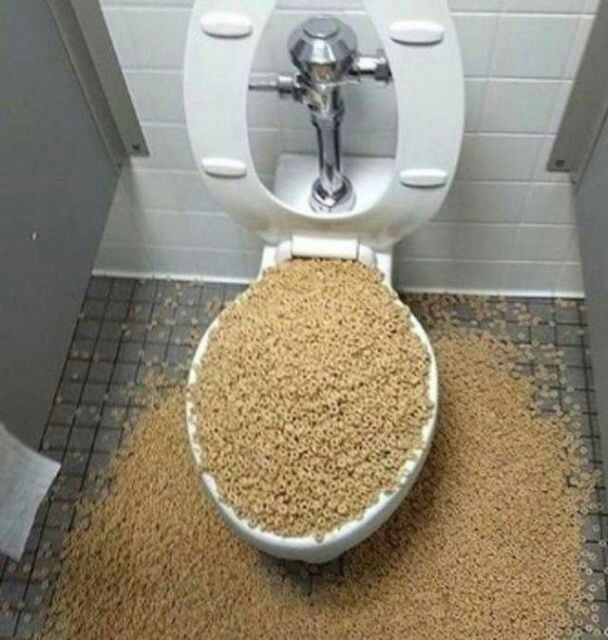Can You to Dispose of Food in the Toilet?
Can You to Dispose of Food in the Toilet?
Blog Article
On this page down the page you will find a good deal of extremely good tips about Is it safe to flush food (especially rice) down the toilet?.

Introduction
Lots of people are usually faced with the problem of what to do with food waste, particularly when it concerns leftovers or scraps. One common question that develops is whether it's alright to purge food down the bathroom. In this write-up, we'll delve into the reasons people may think about flushing food, the consequences of doing so, and alternate techniques for proper disposal.
Reasons why individuals might think about flushing food
Absence of understanding
Some individuals may not recognize the prospective damage triggered by purging food down the bathroom. They may incorrectly think that it's a safe technique.
Benefit
Flushing food down the bathroom may seem like a quick and simple solution to getting rid of undesirable scraps, particularly when there's no close-by trash can offered.
Laziness
Sometimes, individuals might just pick to flush food out of sheer idleness, without considering the consequences of their actions.
Consequences of flushing food down the toilet
Ecological effect
Food waste that winds up in rivers can contribute to contamination and injury water communities. Furthermore, the water made use of to flush food can stress water sources.
Pipes issues
Flushing food can cause clogged up pipelines and drains pipes, triggering pricey pipes repairs and hassles.
Sorts of food that need to not be purged
Coarse foods
Foods with fibrous structures such as celery or corn husks can get entangled in pipelines and cause obstructions.
Starchy foods
Starchy foods like pasta and rice can take in water and swell, causing blockages in pipelines.
Oils and fats
Greasy foods like bacon or food preparation oils need to never be flushed down the bathroom as they can strengthen and cause obstructions.
Appropriate disposal methods for food waste
Utilizing a waste disposal unit
For homes geared up with waste disposal unit, food scraps can be ground up and purged via the pipes system. However, not all foods are suitable for disposal in this manner.
Recycling
Certain food product packaging materials can be reused, reducing waste and reducing ecological influence.
Composting
Composting is an environment-friendly method to deal with food waste. Organic products can be composted and utilized to enrich dirt for horticulture.
The importance of correct waste administration
Reducing ecological harm
Appropriate waste monitoring methods, such as composting and recycling, aid lessen pollution and protect natural deposits for future generations.
Safeguarding plumbing systems
By staying clear of the technique of flushing food down the toilet, property owners can prevent costly pipes repairs and maintain the integrity of their pipes systems.
Verdict
In conclusion, while it might be appealing to flush food down the toilet for benefit, it is very important to comprehend the prospective consequences of this activity. By adopting correct waste monitoring practices and taking care of food waste responsibly, individuals can add to healthier pipes systems and a cleaner atmosphere for all.
FLUSH FOOD DOWN THE TOILET?
FLUSHING FOOD CAN CAUSE BLOCKED DRAINS IN YOUR HOME
All of the plumbing fixtures in your home are connected to the same sewer pipe outside of your home. This outdoor sewer pipe is responsible for transporting all the wastewater from your home to the Council sewer mains. Even small pieces of food that go down the kitchen sink can cause problems for your sewer. It should therefore be obvious that flushing larger bits of food, such as meat, risks a clog in either the toilet itself or the sewer pipes. Flushing greasy food is even more problematic because oil coagulates when it cools, coating the interior lining of your pipes.
THE TOILET IS NOT A BIN
Food isn’t the only thing that people shouldn’t be flushing down the toilet. People use the toilet to dispose of all kinds of things such as tampons, makeup wipes, dental floss, kitty litter and even underwear. Water goes to great lengths to educate residents about the high costs and stress placed on wastewater treatment systems simply from people flushing the wrong stuff down the toilet. It costs taxpayers millions of dollars each year, and homeowners thousands in blocked drain repairs.
FLUSHING FOOD IS A WASTE OF WATER
Flushing food is a waste of our most precious resource - water. In June this year Level 1 water restrictions were introduced to protect water supply from drought conditions. Much of New South Wales continues to be affected by prolonged drought with recent figures revealing up to 97 per cent of the state remains in drought. Depending on whether you have a single or dual flush toilet, every single flush uses between five and 11 litres of water. In the current climate this is a huge amount of water to be wasting on flushing food that should be placed in the bin (or better yet, the compost).
https://www.jabplumbingsolutions.com.au/blog/can-you-flush-food-down-the-toilet

Do you really like reading about ? Give a comment down the page. We would be happy to listen to your insights about this piece. We hope that you come back again soon. Those who appreciated our page please don't forget to share it. I love your readership.
Request Service Report this page